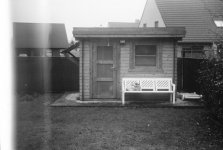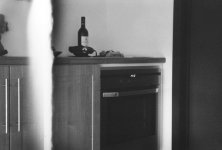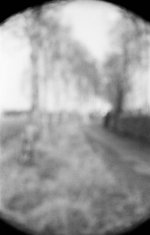Tim Corbeel
Newbie
Hi,
A few months ago my father-in-law gave me a Leica III with a Summar 50mm f/2 collapsible.
This camera was once his father's camera and it wasn't been used for quite some time.
Last week I finally decided to make some shots with it.
When I picked up the prints today two of them had a vertical stripe.
It were the first two shot of the roll.
All the other shots were fine.
Is this a light leak or was it me who screwed up when loading the film?
I'm sorry for the newbie question. I don't have much experience with analog photography. (but fallen in love with it recently 🙂 )
I have attached the two photos (scans of prints).
Some other shots (test shots, not art 😉 ) I made with the Leica and Summar 50mm f/2: http://timcorbeel.posterous.com/leica-iii-my-first-developed-film
Many thanks in advance!
PS: If anyone can recommend other lenses for this camera, please tell me. 🙂
A few months ago my father-in-law gave me a Leica III with a Summar 50mm f/2 collapsible.
This camera was once his father's camera and it wasn't been used for quite some time.
Last week I finally decided to make some shots with it.
When I picked up the prints today two of them had a vertical stripe.
It were the first two shot of the roll.
All the other shots were fine.
Is this a light leak or was it me who screwed up when loading the film?
I'm sorry for the newbie question. I don't have much experience with analog photography. (but fallen in love with it recently 🙂 )
I have attached the two photos (scans of prints).
Some other shots (test shots, not art 😉 ) I made with the Leica and Summar 50mm f/2: http://timcorbeel.posterous.com/leica-iii-my-first-developed-film
Many thanks in advance!
PS: If anyone can recommend other lenses for this camera, please tell me. 🙂





